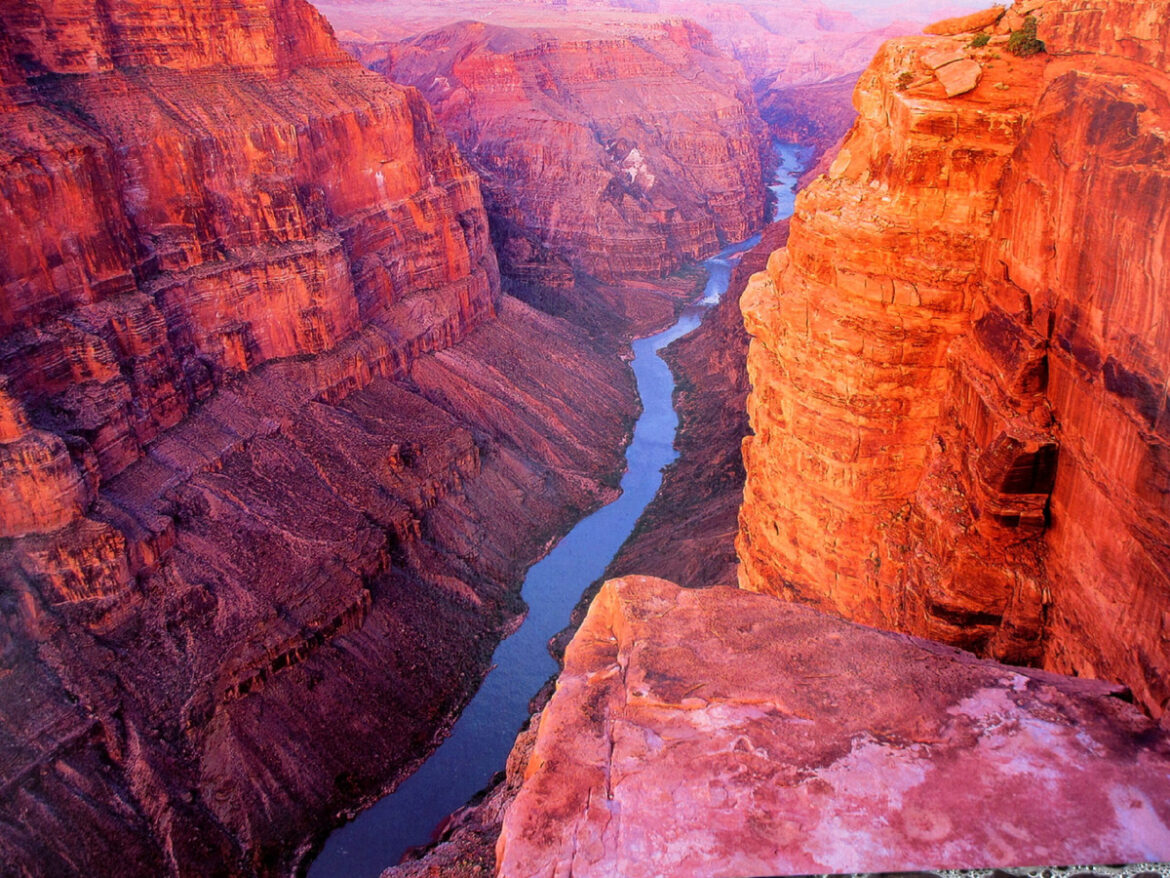The Grand Canyon, one of the world’s most iconic natural landmarks, is a marvel of geological history and stunning landscapes. Its massive size and complex beauty make it a must-visit destination for nature lovers, adventurers, and anyone seeking a transformative travel experience. Spanning over 277 miles, the canyon offers a wide variety of trails and viewpoints to explore, each offering its own unique perspective of this natural wonder. In this article, we’ll highlight some of the best hiking routes and scenic paths that offer breathtaking views and unforgettable experiences.
1. South Rim: The Classic Experience
The South Rim of the Grand Canyon is the most popular and accessible section for tourists. With multiple trails and observation points, it provides visitors with numerous ways to experience the canyon’s grandeur.
Bright Angel Trail
One of the most well-known trails in the South Rim, Bright Angel Trail, is a must for avid hikers. This 9.5-mile route (one way) descends from the rim to the Colorado River. It offers magnificent views of the canyon’s inner walls, with resthouses and water stations along the way. However, it’s a strenuous hike that demands preparation, particularly if you plan to hike back up in the same day. Many hikers choose to stop at Plateau Point, a 12-mile round trip, where they can enjoy panoramic views of the river and the deep canyon.
South Kaibab Trail
For those looking for a shorter but equally dramatic hike, the South Kaibab Trail offers an unforgettable experience. This steep 7-mile round-trip route (to Skeleton Point) provides unbroken views of the canyon. Since it lacks shade and water sources, it’s important to bring plenty of water. The reward, however, is some of the most sweeping, unobstructed views of the canyon.
Desert View Drive
If hiking isn’t your style, Desert View Drive is a 25-mile scenic road that offers numerous pullouts and overlooks. Stop by the famous Desert View Watchtower for one of the best panoramic vistas of the Colorado River and the Grand Canyon’s eastern section. The drive ends at Desert View, where you’ll find a historic watchtower designed by Mary Colter, blending Native American architecture with sweeping canyon views.
2. North Rim: Off the Beaten Path
While the South Rim is the more popular destination, the North Rim offers a quieter, less crowded experience. It’s only open from mid-May to mid-October due to snow, but its cooler temperatures and dense forests make it ideal for summer visits.
North Kaibab Trail
For a more secluded hike, the North Kaibab Trail offers a 14-mile descent to the Colorado River. While more challenging than the South Rim’s trails, it passes through lush forests, waterfalls, and striking geological formations, including the “Roaring Springs” waterfall. Unlike the busy Bright Angel Trail, this path offers solitude and a deep sense of connection to the canyon’s raw beauty.
Cape Royal and Point Imperial
Two of the North Rim’s most spectacular viewpoints, Cape Royal and Point Imperial, offer easy access to incredible vistas. Cape Royal provides a sweeping, 270-degree view of the canyon, including the Colorado River far below. Point Imperial, the highest point in the Grand Canyon at 8,803 feet, overlooks the Painted Desert and the eastern edge of the canyon.
3. Rim-to-Rim: The Ultimate Challenge
For experienced hikers seeking a challenge, the Rim-to-Rim hike is the Grand Canyon’s ultimate adventure. This hike takes you from the North Rim to the South Rim, covering 24 miles and descending over 5,000 feet before climbing back up. It’s a grueling trek that typically requires two days, with an overnight stay at Phantom Ranch, located near the Colorado River. This route allows hikers to experience the diversity of the canyon’s ecosystems, from the lush forests of the North Rim to the arid, desert-like conditions of the inner canyon. Permits and reservations are required for overnight stays.
4. Scenic Flights and River Rafting
Not all visitors are keen on hiking, but there are other exciting ways to experience the Grand Canyon’s majesty.
Helicopter Tours
For a bird’s-eye view, helicopter tours offer an unparalleled perspective of the canyon’s vastness. These tours typically depart from the South Rim or nearby cities like Las Vegas. They provide stunning views of the canyon’s diverse geological layers, the Colorado River, and even hidden areas that are inaccessible by foot.
Colorado River Rafting
Rafting down the Colorado River offers a completely different angle of the canyon. Multi-day rafting trips take adventurers through the heart of the Grand Canyon, passing through thrilling rapids and serene stretches of water. Along the way, rafters can stop at hidden waterfalls, ancient ruins, and remote beaches that are inaccessible by any other means.
5. Planning Tips for Visitors
- Best Time to Visit: The South Rim is open year-round, but the best times to visit are spring and fall, when the temperatures are mild, and the crowds are smaller. The North Rim is only open from mid-May to mid-October.
- Permits: If you plan to hike below the rim or camp overnight, permits are required, especially for the Rim-to-Rim hike and Bright Angel Trail.
- Guided Tours: For those who want an expert to lead the way, numerous guided tours are available. These range from day hikes to multi-day adventures, including rafting and mule rides.
The Grand Canyon is more than just a destination—it’s a journey through time, geology, and breathtaking beauty. Whether you’re hiking the inner trails, driving along the rim, or rafting the Colorado River, the experience is sure to leave an indelible mark on your memory. With routes and experiences suitable for every level of adventurer, the Grand Canyon offers something for everyone.


